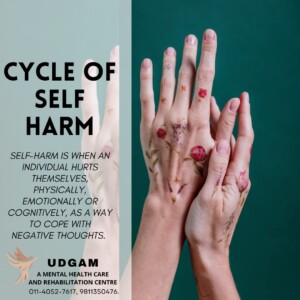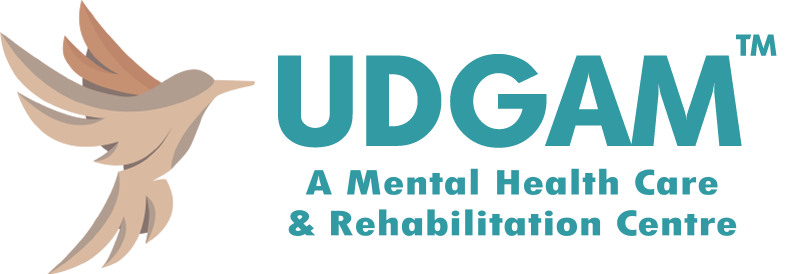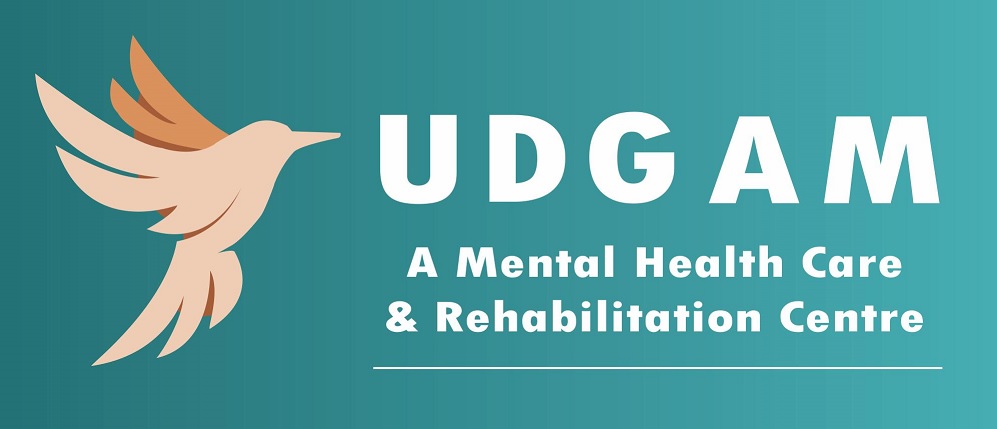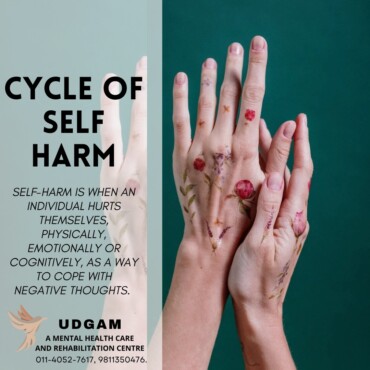The Cycle of Self-Harm
Psychological disorders and their additional features, all occur in a wide spectrum, no two cases are the same, nor do they remain the same throughout the journey. If you plant a single case on a graph, there will not be a consistent pattern. Humans change with time, this change can be drastic or gradual, or impactful or subtle, either way, the features of mental health change as well.
One such sign to look out for or to pay attention to is self-harm. Self-harm is seen in many cases, during the onset or in later stages as well. Self-harm is when an individual hurts themselves, physically, emotionally or cognitively, as a way to cope with negative thoughts.
These thoughts, events, or memories are very intense that an individual is overwhelmed and deals with it by harming themselves.
Need for Self-Harm
Self-harm is the intentional use of objects/behaviour to harm oneself. But the intention of doing it can be different. The need or desire to harm oneself is a symptom of many personality disorders, anxiety disorders, PTSD, Gender dysphoria and more. According to plenty of researches and case studies, it is seen that the reasons for doing self-harm are to ;

- Gain attention,
- Get rid of the guilt
- Self-punishment
- Coping with intense feelings
- Escaping negative feelings
- To control overwhelming emotions
- To fulfil addiction
- As a response to trauma/abuse
- Suicidal ideation/attempt.
Types of Self-Harm
Self-harm can be in many areas, but not all of them are physical or even visible. Having negative self-thoughts or affirmations is also harming yourself. Constantly pulling yourself down, or passive aggression hurts the person more than others. There are many types of self-harm, some more visible than others. Physical, emotional, substance and cognitive are four major categories of self-harm.
Self-Harm - Physical Type
One of the most publicised types of self-harm is physical self-harm. In this type, an individual uses a medium to harm their body. For example, cutting their wrist, hitting their head on a wall, scratching, biting or bruising themselves. The pain experienced after the injury, helps the individual forget, distract or cope with the negative feelings.
Self-Harm - Emotional Type
Another very prominent, yet not categorised as self-harm, is emotional harm. This type includes encouraging negative self-image or inappropriate channels of conversation. For example, using anger as a way to show displeasure or keeping quiet even when you have an opinion.
This category also includes issues like choosing numbness over recognition of your emotions, being passive-aggressive, deliberately hurting others to make them leave etc.
Self-Harm - Substance Type
Another type is using substances like alcohol, drugs, and other toxins, to harm, reduce anger or develop numbness etc, which are signs of self-harm. Individuals partake in these substances even after knowing their harmful effects.
The Cycle of Self Harm
Most researchers call self-harm a type of addiction. And like every other addiction, self-harm has its cycle. This cycle of emotions/actions initiated maintains and promotes self-harming behaviour. Every stage of the cycle has its struggles and challenges. The first stage - is emotional suffering, where an individual undergoes an event and faces a trigger or a flashback, which leads them to the second stage - emotional overload. In emotional overload, the suffering, negativity, guilt or anger is so high that an individual panics, and subconsciously tries to reduce this panic by harming themself. The third stage - self-harm is where the physical, emotional or cognitive methods are used on the self, leading to injury, neglect, numbness or even happiness. The fourth stage - shame/guilt is where the previous actions cause a sense of panic, guilt or embarrassment, which further develops a negative self-image.
The whole cycle is repetitive, needs a trigger to start, and for some, it can turn into a routine. The destruction caused by self-harm is not limited to your body but to your mind, self-image, social relationships and future plans. So being aware of your tendencies, working on them, breaking the cycle and getting the appropriate aid, are all necessary steps to stop self-harm.
This cycle can be broken when every stage is worked at and not just ignored in favour of getting faster results. Remember lasting results come with time and not with speed. Contact us for an appointment and stay tuned for more information.
[ratings]
Anuja Sathe
Counselling Psychologist




